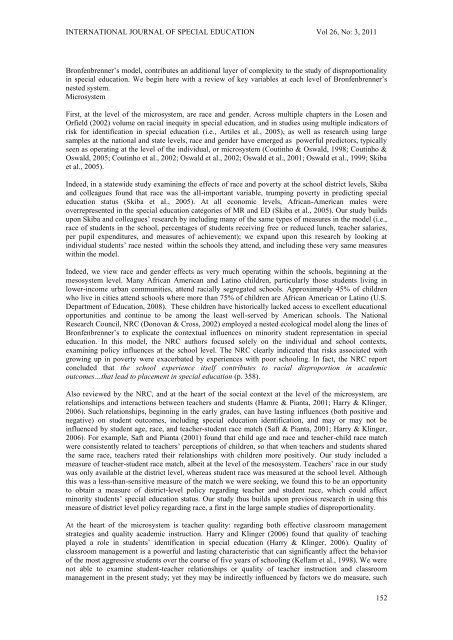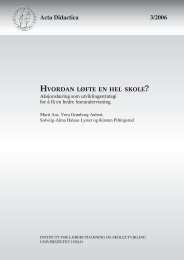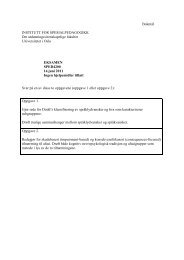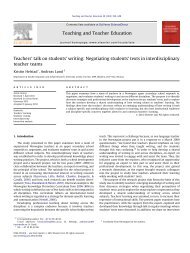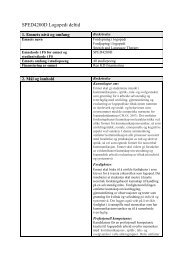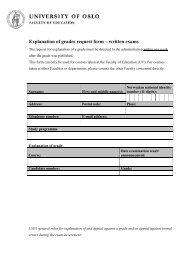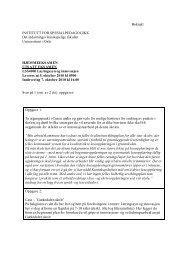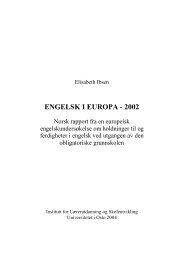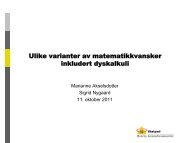International Journal Special Education
International Journal Special Education
International Journal Special Education
Create successful ePaper yourself
Turn your PDF publications into a flip-book with our unique Google optimized e-Paper software.
INTERNATIONAL JOURNAL OF SPECIAL EDUCATION Vol 26, No: 3, 2011Bronfenbrenner’s model, contributes an additional layer of complexity to the study of disproportionalityin special education. We begin here with a review of key variables at each level of Bronfenbrenner’snested system.MicrosystemFirst, at the level of the microsystem, are race and gender. Across multiple chapters in the Losen andOrfield (2002) volume on racial inequity in special education, and in studies using multiple indicators ofrisk for identification in special education (i.e., Artiles et al., 2005), as well as research using largesamples at the national and state levels, race and gender have emerged as powerful predictors, typicallyseen as operating at the level of the individual, or microsystem (Coutinho & Oswald, 1998; Coutinho &Oswald, 2005; Coutinho et al., 2002; Oswald et al., 2002; Oswald et al., 2001; Oswald et al., 1999; Skibaet al., 2005).Indeed, in a statewide study examining the effects of race and poverty at the school district levels, Skibaand colleagues found that race was the all-important variable, trumping poverty in predicting specialeducation status (Skiba et al., 2005). At all economic levels, African-American males wereoverrepresented in the special education categories of MR and ED (Skiba et al., 2005). Our study buildsupon Skiba and colleagues’ research by including many of the same types of measures in the model (i.e.,race of students in the school, percentages of students receiving free or reduced lunch, teacher salaries,per pupil expenditures, and measures of achievement); we expand upon this research by looking atindividual students’ race nested within the schools they attend, and including these very same measureswithin the model.Indeed, we view race and gender effects as very much operating within the schools, beginning at themesosystem level. Many African American and Latino children, particularly those students living inlower-income urban communities, attend racially segregated schools. Approximately 45% of childrenwho live in cities attend schools where more than 75% of children are African American or Latino (U.S.Department of <strong>Education</strong>, 2008). These children have historically lacked access to excellent educationalopportunities and continue to be among the least well-served by American schools. The NationalResearch Council, NRC (Donovan & Cross, 2002) employed a nested ecological model along the lines ofBronfenbrenner’s to explicate the contextual influences on minority student representation in specialeducation. In this model, the NRC authors focused solely on the individual and school contexts,examining policy influences at the school level. The NRC clearly indicated that risks associated withgrowing up in poverty were exacerbated by experiences with poor schooling. In fact, the NRC reportconcluded that the school experience itself contributes to racial disproportion in academicoutcomes…that lead to placement in special education (p. 358).Also reviewed by the NRC, and at the heart of the social context at the level of the microsystem, arerelationships and interactions between teachers and students (Hamre & Pianta, 2001; Harry & Klinger,2006). Such relationships, beginning in the early grades, can have lasting influences (both positive andnegative) on student outcomes, including special education identification, and may or may not beinfluenced by student age, race, and teacher-student race match (Saft & Pianta, 2001; Harry & Klinger,2006). For example, Saft and Pianta (2001) found that child age and race and teacher-child race matchwere consistently related to teachers’ perceptions of children, so that when teachers and students sharedthe same race, teachers rated their relationships with children more positively. Our study included ameasure of teacher-student race match, albeit at the level of the mesosystem. Teachers’ race in our studywas only available at the district level, whereas student race was measured at the school level. Althoughthis was a less-than-sensitive measure of the match we were seeking, we found this to be an opportunityto obtain a measure of district-level policy regarding teacher and student race, which could affectminority students’ special education status. Our study thus builds upon previous research in using thismeasure of district level policy regarding race, a first in the large sample studies of disproportionality.At the heart of the microsystem is teacher quality: regarding both effective classroom managementstrategies and quality academic instruction. Harry and Klinger (2006) found that quality of teachingplayed a role in students’ identification in special education (Harry & Klinger, 2006). Quality ofclassroom management is a powerful and lasting characteristic that can significantly affect the behaviorof the most aggressive students over the course of five years of schooling (Kellam et al., 1998). We werenot able to examine student-teacher relationships or quality of teacher instruction and classroommanagement in the present study; yet they may be indirectly influenced by factors we do measure, such152


